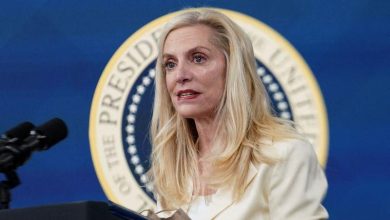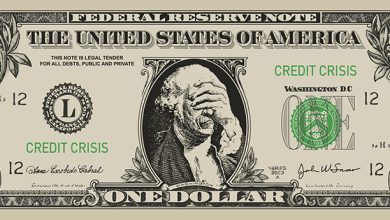Fed faces choices as challenging as any since the 1970s

The author is co-chief investment officer of Bridgewater Associates
As economies continue their transition from an adrenaline-fueled upturn to more self-sustaining growth, policymakers since the 1970s have been increasingly confronted with choices that are as challenging as any other.
The monetary and fiscal stimulus applied during the pandemic and earlier in the U.S. and most developed economies boosted incomes, filled wealth gaps, and increased household wealth.
It is important that the expenditure that results from this is measured in nominal terms before inflation is taken into account. This is related to the nominal flow of credit that initially came from the expansion of government credit, which was financed by money pressure. How that nominal expenditure divides between real gross domestic product and inflation depends on the quantity produced.
Production to date has not been able to meet this high level of nominal demand or is expanding fast enough. As a result, the very high level of nominal spending produces a lot of inflation, which seeps into the cost of living and wages and the need for payment to keep up.
In other words, a self-reinforcing inflation cycle is building. We now face the greatest potential for a sustained rise in inflation over decades.
These conditions will require a policy transition. It is clear that policymakers are realizing this now, but it is not clear how aggressive their moves are going to be. Given the circumstances, chances are they are moving too little and too slowly.
The pandemic and interest rates almost zero make their choices especially difficult. With Covid-19 and the risk of new variants constantly in the background, there will be ongoing questions about whether rising inflationary pressures will continue, as well as ongoing uncertainty about the impact of the pandemic on economic growth.
These questions will be exacerbated by the asymmetric ability of central banks to tighten on convenience. Policymakers have a full arsenal of policies to sharpen. But with nominal rates near secular lows and asset prices high, they have only one form of policy to stimulate – money pressure coordinated with fiscal expansion.
That leverage is now less available because rising inflation is causing political resistance to further action. And with the politics of government spending now increasingly burdened, if the U.S. Federal Reserve is made too strict, it can happen even in a time of fiscal drag instead of stimulus.
Finally, the Fed will be concerned about the economy’s sensitivity to rising rates after being forced to turn around quickly after the 2018 tightening. Collectively, this set of circumstances encourages the Fed to stay loose longer on monetary policy, leaving room for a more entrenched inflation cycle.
While the Fed and other central banks are likely to be concerned about increased sensitivity to austerity, there is a reasonable likelihood that the economy may actually be less sensitive to a rise in interest rates than recent experience would suggest.
The improvement in household balance sheets, especially those of the middle class, implies a greater degree of resilience to monetary tightening. And given the rise in inflation, there is more room to raise nominal rates without tightening conditions in real terms.
Carrying this set of conditions forward, a reduced economic sensitivity to a rise in interest rates combined with a cautious approach to raising it, will further contribute to the risk of falling behind the curve, followed by a more significant tightening with an even greater impact on economies and markets at that time.
So how much and how fast should they move? Given current low unemployment, to reach target inflation levels, the tightening should slow nominal demand growth to a level moderately above labor force growth plus productivity.
To do so would require a combination of depleting reserves held by banks at the Fed and a rise in real interest rates. It will also require higher interest rates relative to what is discounted by the market and an increase in short-term bond yields relative to long-term. This process is, of course, a dance in terms of unfolding conditions, but it would be important criteria.
For investors, these circumstances create two unique risks relative to the past four decades. First, there is the risk that asset values will fall in real terms due to a sustained rise in inflation. Second, there is the risk that central banks will fall further behind the movement in inflation and have to catch up aggressively.
In the very short term, continued loose monetary policy will tend to have favorable effects in the line of a mid-cycle economic transition. However, too much delay can mean that the stimulus is stretched too much. The longer-term risk is that the Fed lags behind with tightening and then is forced to catch up with a much larger response.
Source link





